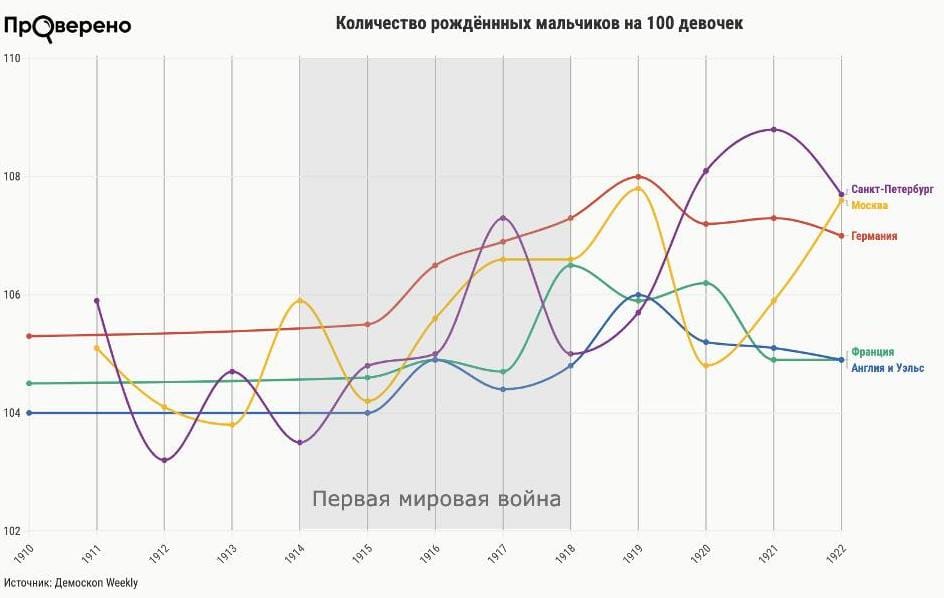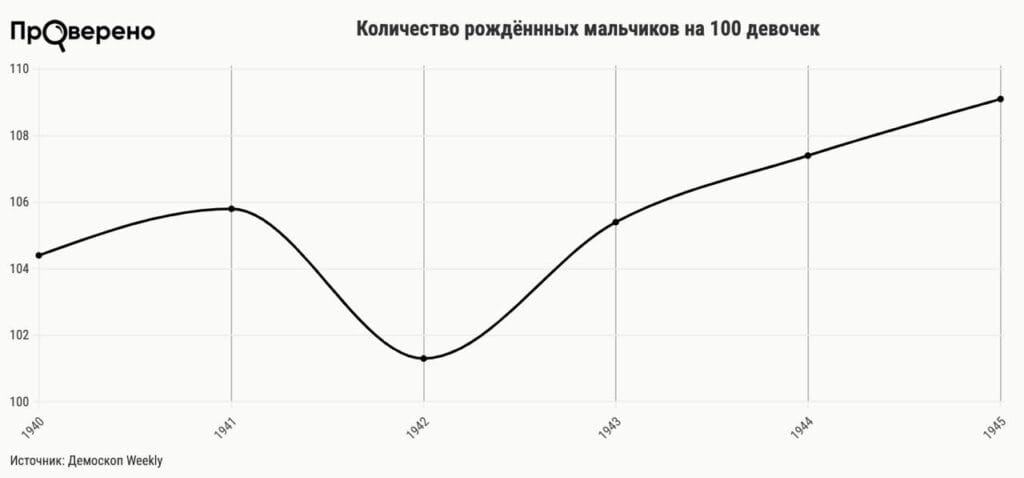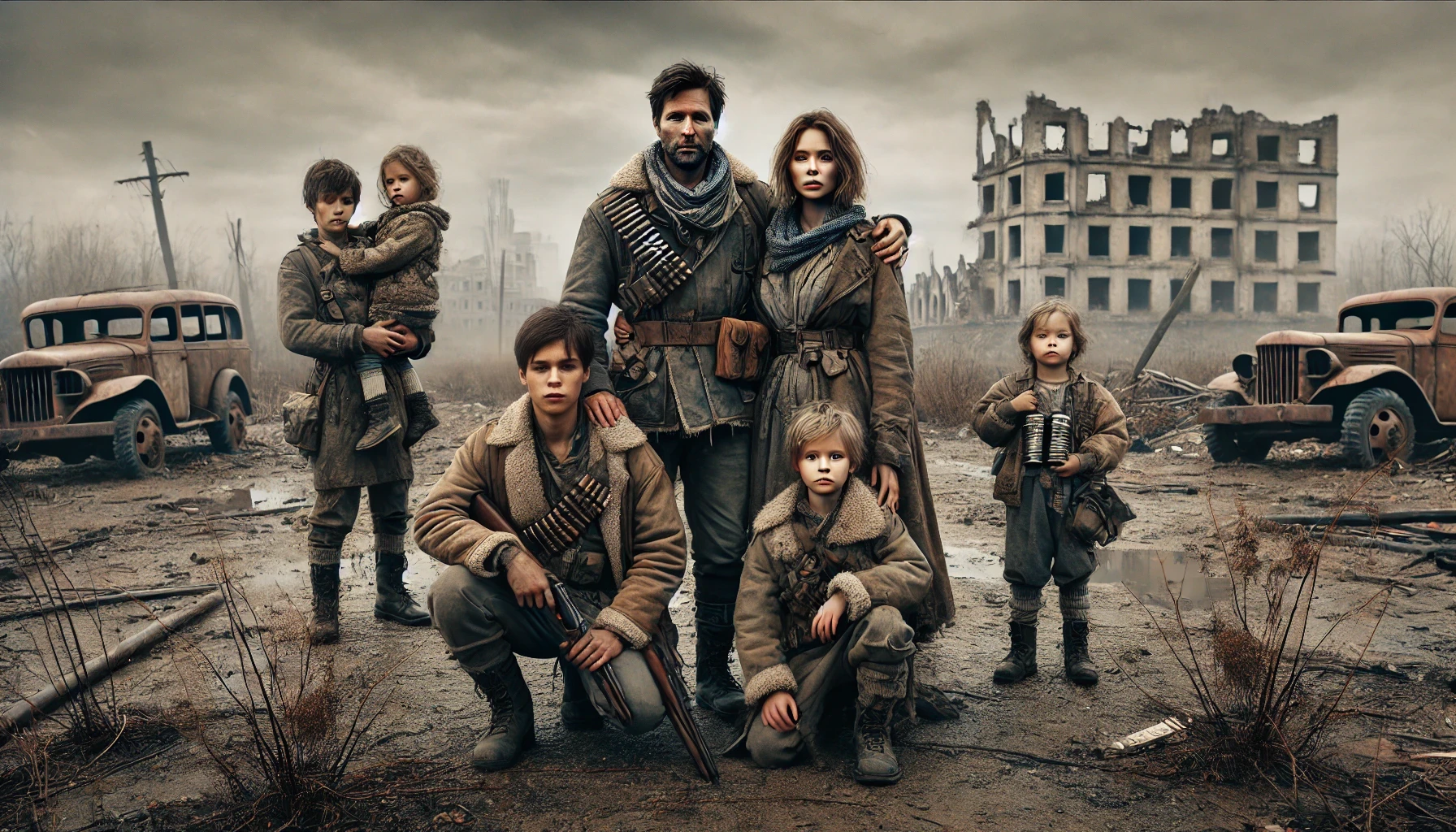There is a widespread belief that during military conflicts and for several years after their end, more boys are born than usual - supposedly nature thus restores the balance between the sexes. We decided to check whether this is supported by statistical data.
Statement that more boys are born during and after wars, newspapers called popular belief, confirmed, however, by scientific data. They write about this with reference to demographers Internet portals And blogs. "Komsomolskaya Pravda” notes that “after a war, more boys are born, and after a terrorist attack, more girls.” At the same time, the authors Lenta.ru in 2014 - again with reference to scientists - they argued exactly the opposite: that, on the contrary, fewer boys are born during wars. IN some sources is given another thesis: supposedly more boys are born before wars. Biologist and popularizer of science Alexander Panchin calls the belief that wars cause more boys to be born is a myth.
Genetic sex the future child depends on which chromosome of the father - X or Y - will merge with the mother's egg. Most folk remedies that help to “program” the sex of a child do not have full scientific justification. Methods such as placing “typical” toys for boys or girls under the bed during conception are nothing more than superstition and have nothing to do with the functioning of male or female reproductive cells. However, some experiments showthat a diet based on foods low in sodium and high in calcium, combined with conceiving well before ovulation, increases the likelihood of having a girl.
Scientists studying this topic use two different characteristics: primary sex ratio (at conception) and secondary (at birth). It is impossible to reliably determine the primary ratio in any group for a number of reasons. Diagnose pregnancy using a rapid test Can ten days after conception, laboratory methods (blood test for hCG) they will give the result is a little faster, after six to eight days. However, firstly, it is difficult to imagine a situation in which a woman who has regular sex life takes a blood test every sixth day after each sexual intercourse. Secondly, conception does not necessarily occur at the moment of sexual intercourse - a sperm that enters the female body is capable of fertilization within four to five days, and the egg retains the ability to conceive for another two days after ovulation. Usually, the test is used only after a delay, and the date of conception is determined conditionally using the obstetric period, that is, counting the days from the beginning of the last cycle before pregnancy (from the first day of the last menstruation). Finally, in the first weeks the pregnancy may be terminated, but the woman will not even notice it. By data According to the US National Library of Medicine, approximately one in two fertilized eggs dies before a woman realizes she is pregnant, resulting in a spontaneous abortion. Therefore, scientists can only hypothesize about what the primary ratio actually is. By different According to data, this figure can be from 1.07 to 1 in favor of boys to equilibrium.
The secondary ratio is influenced by a number of factors. On the one hand, male fetuses have a roughly 10% higher risk of stillbirth than female fetuses, as of 2014. found out researchers from the University of Exeter (UK) analyzed data on more than 30 million births around the world. Also male fruits more are susceptible to chromosomal abnormalities that lead to spontaneous abortion. On the other hand, in the embryonic period (up to nine weeks) miscarriage is more common is happening with female fetuses (including those without chromosomal abnormalities).
UN data shows that since 1950, secondary sex ratio has steadily shifted in favor of boys - in 2023 the global sex ratio at birth amounted to already 105.18 boys per 100 girls. This is facilitated, among other things, by selective abortions - Some parents prefer to get rid of female embryos. This practice is most common in China, India, Pakistan, and Azerbaijan. By calculations Scientists from the University of Southampton, in 1970–2017, due to selective abortions, 23.1 million girls were not born around the world.
Scientists described the change in the secondary ratio during and after military conflicts back in the middle of the 20th century. In 1946, Soviet demographer Sergei Novoselsky analyzed statistics for the first half of the 20th century. The scientist explained the choice of this time period by the fact that “most wars in the 19th century were short-term, and for previous periods of long wars before the 19th century, as well as the beginning of the 19th century, such as the Napoleonic wars, there was not sufficiently accurate and complete data on the sex composition of those born.” Novoselsky turned to available statistics on secondary sex proportions in Germany, France, England and Wales, as well as Moscow and St. Petersburg before, during and after the First World War. It turned out that in all the countries and cities mentioned, by the end of the war and in the first year after its completion, the secondary sex proportion was shifted towards the birth of boys compared to the pre-war years.

Novoselsky also analyzed data on Leningrad before, during and after the blockade of 1941–1944.

The author explains the “failure” of 1942 by the “extremely increased... frequency of premature births,” noting that “among those born prematurely, girls, not boys, predominate.” Novoselsky comes to the conclusion that the war does change the sex ratio among newborns.
In 1954, shifting sex proportions in the United States during and after World War II described researchers from the State University of New York and the Harvard School of Public Health. They noted that in 1942–1946, the proportion of male births among whites was above average, and in 1946, more boys were born relative to girls in the United States than in any year for which statistics are available.
For this phenomenon use the term “returning soldier effect” - it was believed that after a long separation, couples have sex more often, including before a woman’s ovulation, and due to the fact that sperm with a Y chromosome are more tenacious, they have a higher chance of fertilizing an egg. True, this hypothesis contradicts the experiment mentioned at the beginning of this analysis, which showed that intercourse before ovulation in combination with a special diet increases the likelihood of having a girl.
Vladimir Iskrin, a teacher at the Faculty of Humanities at the St. Petersburg Polytechnic University, in his article for the magazine “Science and Life” writes, that in the middle of the 20th century, a shift in sex proportion was also noticed among people working in high mountain conditions (apparently in the Caucasus) - they had only 36 sons per 100 daughters. Initially, the phenomenon was associated with oxygen starvation, increased radiation, low pressure and the contrast between constant life on the plain and a business trip to the highlands. To test the hypothesis, a group of male rabbits was transported to the mountains for a month and a half. Typically, the sex ratio of the offspring of these animals is 96 males per 100 females. In the “climber” rabbits, after a month and a half in the mountains and returning to their usual habitat, it was 68, and in the control group (they lived on the plain, but were also isolated from females for a month and a half) - 65. That is, the main factor in the change in the proportion was not external conditions, but namely abstinence, which the animals regarded as a threat to the existence of the species. This observation is consistent with the fact that evolutionarily females support stability of the species, and males, on the contrary, make changes.
Researcher Valerie Jay Grant, author of Maternal Personality, Evolution, and the Sex Ratio: Do Mothers Control the Sex of the Infant?, analyzed birth statistics during years of conflict and terrorist attacks. shares the following observation: after short wars and short-term shocks, more girls are born, and after protracted military conflicts, more boys are born. As can be seen from the above statistical data, the experience of two world wars fits well into this concept. Meta-analysis of the impact of terrorist attacks on secondary sex ratio held in 2017, scientists from New Zealand, Ireland and Malta. They analyzed the shift in sex ratios in the United States, Spain, Great Britain and Norway after five major terrorist attacks that occurred in these countries: respectively, the attacks of September 11, 2001 and shooting at Sandy Hook Elementary School in 2012, bombings in Madrid in 2004, a series of terrorist attacks in London in 2005, as well as the terrorist attack that Anders Breivik carried out in 2011 in Oslo and on the island of Utøya. Within three to five months after each tragic event, the number of boys born fell by 3% - as scientists suggest, due to the fact that the mother’s organisms “stopped” such a pregnancy in some way still unknown to science. This did not affect the girls. At the same time, shootings in August 2019 in Ohio and Texas led to a shift in gender proportions, judging by the data available to researchers, didn't bring.
A large-scale review of factors that can affect the gender of the unborn child, held in 2021, scientists from the USA and Sweden. They analyzed data on 150 million Americans and 9 million Swedes, who collectively gave birth to more than 6 million children during the study period (2003–2011 and 1983–2013, respectively). It turned out that the air temperature at the time of conception and the time of year had no effect on the sex of the child, but high levels of arsenic, mercury, nitrates and aluminum in the water and soil “programmed” the birth of a boy. Scientists also studied social factors: for example, in families living near a fast food restaurant, girls were more likely to appear, and in those who lived in areas with high mortality rates in road accidents, boys were more likely to appear. Finally, the researchers looked at statistics for children born shortly after Hurricane Katrina, which hit the southeastern United States in 2005, and shooting from Virginia Tech in 2007. Although the number of deaths in the first case was significantly higher, the natural disaster did not change the gender proportion, but after the shooting at an educational institution there was a shift in favor of the birth of girls. Summarizing their findings, the scientists suggested that in favorable conditions, women give birth to more boys, and in unfavorable conditions, more girls.
To similar conclusions came Shige Song from the City University of New York. He studied the shift in sexual proportions during Great Chinese Famine, which in 1959–1961, according to various estimates, claimed the lives of 15 to 30 million people. As Song notes, from April 1960 there was a significant shift in the PRC in favor of girls, which lasted until October 1963. This was followed by a compensatory increase in the birth of boys, and the proportion returned to its previous values only by July 1965. Song explains this by saying that, from an evolutionary point of view, during times of famine, women must produce more girls in order to survive the population.
Finally there is hypothesis about a certain gene that activates sperm with an X or Y chromosome. Corrie Gellatly from the University of Leicester (UK) analyzed 927 family trees of North Americans and Europeans. He suggested that the likelihood of having a descendant of one sex or another is inherited through the male line. Let's say, there are two families: Jonah and Richie. John has the gene for having a large number of sons, so he has one daughter and three sons. Richie does not have this gene, so he has three daughters and one son. If war breaks out, sons from both families are sent to the front. For John, the likelihood that at least one of his sons will survive is much higher than for Richie. When he returns, this son will be able to become the father of several more boys. At the same time, nothing will depend on the daughters of John and Richie, because, according to Gellatly, the gene is active exclusively in men. Although statistics do not contradict this hypothesis, scientists have not yet discovered such a gene.
Thus, demographic statistics from the First and Second World Wars, as well as the first post-war years, rather confirm the thesis that more boys are born during and after large-scale hostilities. Although scientists have put forward various hypotheses to explain this observation, there is not yet a generally accepted, consistent explanation in the academic community. It cannot be ruled out that this is just a false correlation and that war does not play a key role in changing the secondary sex proportion.
Cover image: Dall-E
If you find a spelling or grammatical error, please let us know by highlighting the error text and clicking Ctrl+Enter.






